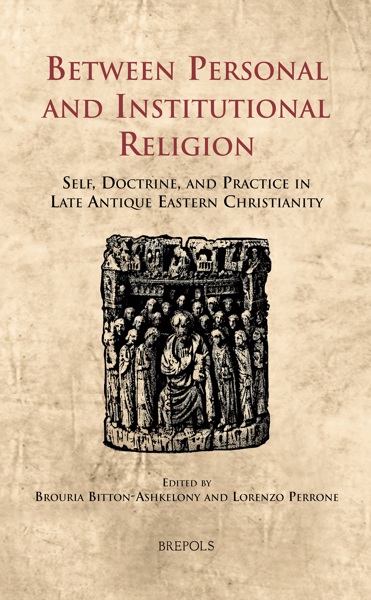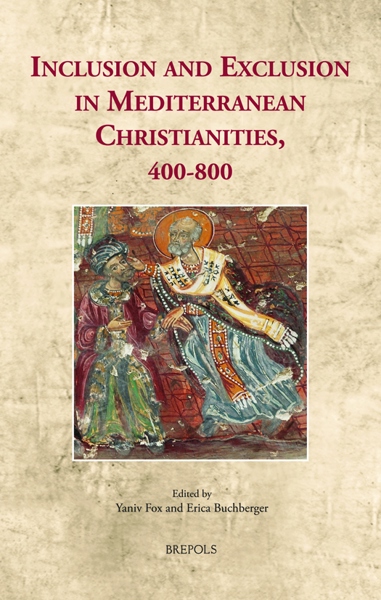
Motions of Late Antiquity
Essays on Religion, Politics, and Society in Honour of Peter Brown
Jamie Kreiner, Helmut Reimitz (eds)
- Pages: x + 353 p.
- Size:156 x 234 mm
- Illustrations:2 b/w
- Language(s):English
- Publication Year:2016
- € 110,00 EXCL. VAT RETAIL PRICE
- ISBN: 978-2-503-54911-8
- Hardback
- Available
- € 110,00 EXCL. VAT RETAIL PRICE
- ISBN: 978-2-503-54998-9
- E-book
- Available
- Contains contributions in Open Access
Offers a vision of Late Antiquity which allows for a new integration of different fields such as Roman, Byzantine, and Islamic studies, and a new conversation between ancient and medieval history.
“Each of the essays in this volume demonstrates the impact of Brown's work, (…) while taking his insights into new territories. It is a warm and affectionate volume that vividly displays the debts of Brown's students and friends to his generous and influential presence, and to his long list of publications spanning five decades and two continents.” (Averil Cameron, in The Medieval Review, 17.01.2017)
“One may hope that his exemplum, so well represented in this volume (which ends with a list of Brown’s publications) will also inspire fresh intellectual daring and inventiveness among intellectual historians of the Islamicate world.” (Guy G. Stroumsa, in Intellectual History of the Islamicate World, 6/1-2, 2018, p. 248)
“Overall, the disparate approaches found in this stimulating volume reveal the fresh perspectives that late antique scholars can offer (…) This study clearly exhibits Peter Brown’s unique gifts as a linguist, writer, and historian.” (Michael Edward Stewart, Parergon, 34/2, 2017 p. 229)
When did Late Antiquity actually end? Peter Brown, who has done so much to define the field, once replied: ‘always later than you think’. This book takes stock of this insight and, in continual conversation with Peter Brown’s work, applies it to ever wider social and geopolitical horizons. The essays of this volume demonstrate that Late Antiquity is not just a period in which the late Roman world grew into the three successor cultures of the Roman Empire — the Latin West, Byzantium, and the Islamic world — but also a set of hermeneutical tools for exploring historical transformation. A late antique view considers both the profound plurality of past societies and the surprising instances when a culture coheres out of those differences. The studies here follow those motions of fracture and alignment, and they show how working along the lines of a single but deeply textured vision of Late Antiquity makes it possible to integrate different fields such as Roman, Byzantine, and Islamic studies, and to start a new conversation between ancient and medieval history.
Acknowledgements
Motions of Late Antiquity: An Introduction —JAMIE KREINER AND HELMUT REIMITZ
‘There is a World Elsewhere’: The World of Late Antiquity — IAN WOOD
The Transformation of the Roman World Revisited — WALTER POHL
The Manichaean Body and Society — PHILIPPA TOWNSEND
Social Interactions in a Rural Monastery: Scholars, Peasants, Monks, and More in the Life of Hypatius— JACLYN MAXWELL
Persuading the Powerful in Post-Roman Iberia: King Euric, Local Powers, and the Formation of a State Paradigm— DAMIÁN FERNÁNDEZ
Discourses of Religious Violence and Christian Charity:The Christianization of Syria in Jacob of Sarug’s On the Fall of the Idols — DANIEL L. SCHWARTZ
Philoxenos of Mabbug: A Cappadocian Theologian on the Banks of the Euphrates? — DAVID A. MICHELSON
The Equality of Empires: Procopius on Adoption and Guardianship across Imperial Borders —MICHAEL MAAS
Life on Schedule: Monks and the Agricultural Cycle in Late Antique Egypt — ARIEL LOPEZ
Gregory’s Kings, the Theatre of the ‘Modern’, and the Endurance of Romanitas — PHILIP ROUSSEAU
The Dark Side of Holiness: Barsauma the ‘Roasted’ and the Invention of a Jewish Jerusalem — VOLKER MENZE
Christian Identity in the Seventh Century Byzantium: The Case of Anastasius of Sinai — YANNIS PAPADOGIANNAKIS
Nationes quam plures conquiri. Amandus of Maastricht, Compulsory Baptism and ‘Christian Universal Mission’ — STEFAN ESDERS
The Life of Simeon of the Olives:A Christian Puzzle from Islamic Syria— JACK TANNOUS
Revisiting the Carolingian Renaissance — JANET NELSON
Peter Robert Lamont Brown: Publications, Professional Memberships, and Recognition




